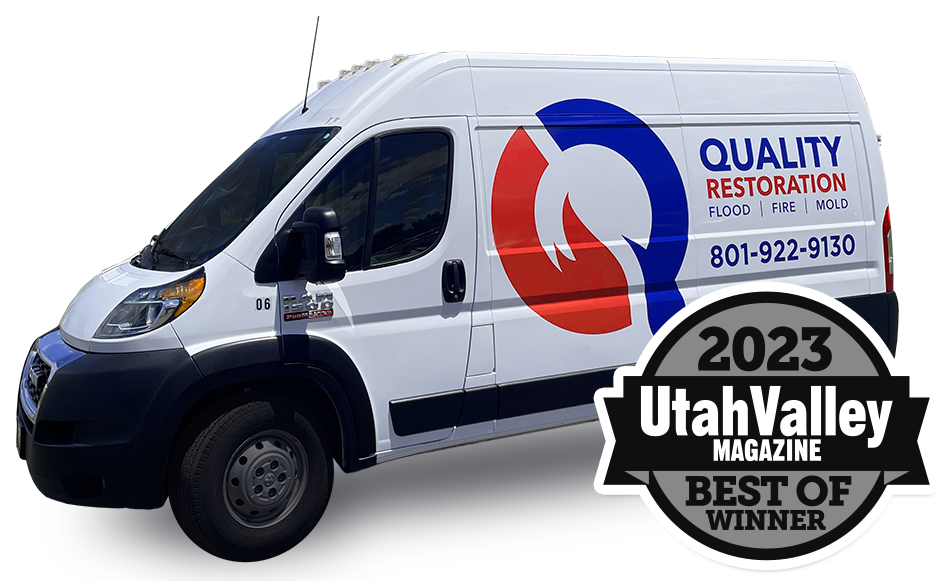Ever thought about the hidden damage behind your home’s walls? Water is vital for many household tasks. But, when it gets into your walls, it can cause big problems for your home’s structure, health, and safety. Water damage in walls is more than just a cosmetic issue; it can lead to expensive repairs later.
Moisture can make wood swell and drywall warp. It can even affect electrical systems. This creates the perfect environment for mold to grow, which is bad for your health. It’s important to spot and fix these issues quickly to avoid bigger problems. Keep reading to learn how water can harm your home and what you can do to stop it.
Key Takeaways
- Water damage in walls can lead to structural integrity issues.
- Moisture problems can cause wood to swell and drywall to warp.
- Mold growth risks can pose serious health hazards.
- Water infiltration can compromise electrical systems and metal fixtures.
- Immediate intervention is necessary to prevent severe damage.
- Timely home repair and prevention strategies are crucial.
- Early detection can save significant repair costs.
Understanding How Water Enters Your Walls
Water can get into homes through leaks, flooding, or broken appliances. It can also come in through weak spots in the outside seals. When this happens, water finds its way into the walls because of materials that let it soak in easily.
This moisture can move around inside the walls, causing damage that’s not always easy to see. It might not be noticed until a lot of damage has been done.
How much damage depends on the type of water and how long it stays there. It also depends on the materials in your home. Water can seep into walls without causing problems right away. But over time, it can really harm your home’s structure.
It’s important to catch water problems early to stop them from getting worse. A professional should check your home to find all the places where water might be getting in. This way, you can fix the leaks and stop more damage from happening.
Early Signs of Water Damage in Walls and Floors
Spotting signs of water damage early can save homeowners a lot of money and prevent more damage. Look for stains or damp patches on walls or ceilings. These often mean there’s moisture trapped inside and could lead to bigger problems.
Checking the floors is also key to finding water damage. If floorboards are warped or buckling, it means moisture has gotten to the wood. Wallpaper or paint peeling off walls can also hint at hidden water issues.
High moisture can cause mold and mildew, which harm surfaces and can be bad for health. If you smell mold or see mildew, it’s time to check for water damage. This smell and sight mean you should look closely and fix the problem fast.
Doing a detailed check helps homeowners see how bad the damage is and what to fix first. Spotting these signs of water damage early lets homeowners act quickly. This can help avoid bigger problems later.
What happens if water gets in your walls?
Water getting into walls can cause both short-term and long-term problems. At first, you might see things like stained walls, peeling paint, or wallpaper coming off. These are just the start.
But the real issues go deeper. Wood parts can get soft or weak. This can make the whole structure of your home unsafe.
Water damage also leads to mold and mildew growth. These can be a big problem for people with allergies or breathing issues. Being around mold can cause coughing, sneezing, and even serious breathing problems.
Fixing these problems is hard and expensive. You might need to strengthen the walls and get rid of mold. This means a lot of work and money to fix the damage from water.
Mitigating and Repairing Water Damage from Leaks
Fixing water damage starts with quickly finding and fixing the leak. It’s key to stop more water from getting in. After securing the leak, removing the water is the next step to lessen damage.
After removing the water, drying and dehumidifying the area is vital. This creates a dry space to stop mold and mildew from growing. Using air movers and dehumidifiers helps dry things out fast.
Cleaning and sanitizing the area is crucial to get rid of harmful germs. Once it’s clean and dry, a detailed check is done to see how much damage there is. This helps plan for repairs and renovations.
Fixing water damage might mean replacing things like drywall and flooring. When choosing new materials, think about how they can withstand water in the future.
Preventing Future Water Damage in Your Home
Keeping your home safe from water damage is key. Regular home inspection helps spot problems early. This means checking plumbing, roofs, and gutters to stop water buildup.
Plumbing maintenance is a must. Homeowners should look for leaks, corrosion, and damage in pipes. Also, make sure rooftops are secure and gutters are clear to let water flow right.
Good exterior maintenance is crucial too. It means keeping roofs in good shape and making sure gutters and downspouts work well. This stops water from gathering and causing harm.
Managing your landscape is also vital. Design your yard to keep water away from your house’s foundation. You can do this with grading, French drains, or swales.
- Do regular home inspections to catch water damage early.
- Keep plumbing systems in top shape with regular checks.
- Make sure roofs and gutters are secure and clear.
- Plan your yard to keep water away from your house.
- Get professional advice for detailed checks and tips.
By following these steps, you can protect your home from water damage. This keeps your home strong and valuable.
Conclusion
It’s vital to tackle water damage in your home to keep it strong and safe. Knowing about water damage risks helps you act fast when leaks or seepage happen. This can stop water from getting into walls and floors.
Spotting early signs like stains, dampness, or mold means you can fix problems quickly. This stops more damage and keeps your home safe. Using the right repair methods and getting expert advice is key to keeping your home safe and healthy.
Preventing water damage is also crucial. Regular checks and good insulation can cut down on risks and costs. Understanding water issues shows the need for careful planning and smart choices. With these steps, you can lower the chances of water damage and make your home safer and last longer.




















